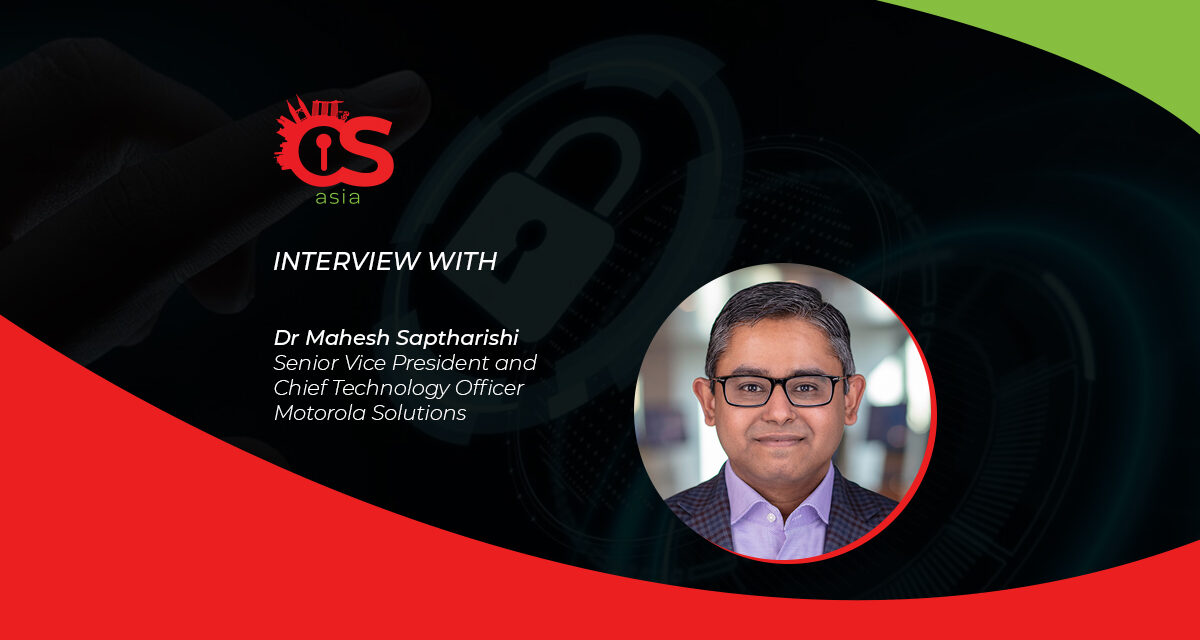How technology is evolving to address public safety and security concerns in the region.
Just as the COVID-19 pandemic has escalated the implementation of new technological advancements, it has also expanded the ways existing technologies are repurposed and adapted to protect citizens around the world.
The recent Consensus for Change report by Motorola Solutions highlights the importance of technological advancements, where 71% of those surveyed advocated for the use of advanced technologies such as video cameras, cybersecurity, and the cloud, all of which are needed to address the current challenges of the world.
As the pandemic continues to trigger increasing social uncertainty, technological transformation has provided an opportunity for public safety providers to enhance and improve current solutions. The Consensus for Change report found that 88% of citizens globally want to see public safety transformed through the adoption of advanced technology with expectations that technology should continue to evolve in order to protect citizens around the world.
Technology has been vital to helping many organizations maintain safety while continuing to deliver their services at a time of significant disruption. For instance, in Malaysia, the Mass Rapid Transport Corporation has incorporated video and software technology to detect passengers with elevated temperatures, demonstrating the role of technology in ensuring public safety and security in the wake of the pandemic.
Implementing technology for widescale use also comes with added responsibilities. In Singapore, 92% of respondents from the study support the use of technology to make Singapore safer, but 72% also emphasized the need to be able to trust the organizations that hold information about them.
CybersecAsia discussed these findings with Dr Mahesh Saptharishi, Senior Vice President and Chief Technology Officer, Motorola Solutions, to find out how technology is evolving to power public safety and security in the region.

With 88% of citizens globally wanting to see public safety transformed through the adoption of evolving technologies, what are some of the advanced technologies you find most suited to meet this need?
Dr Mahesh: The global pandemic has changed the way that citizens think and feel about the use of technology to provide safety.
As citizens, we have embraced digital technology and skills to stay safe, connected and productive throughout this pandemic. That includes everything from telehealth consultations to QR code check-ins, video conferencing and beyond.
We recently conducted a global research study with Goldsmiths University of London called Consensus for Change that examined how public opinion about the use of technology for safety has changed since the pandemic began.
We also interviewed multiple public safety and enterprise organizations around the world to learn how they had applied technology in response to new challenges brought on by the pandemic.
All over the world, familiar technologies are being used to overcome new challenges: video security systems powered by AI are helping to detect people with elevated temperatures, cloud technology is enabling teams working remotely to maintain collaboration and productivity and mission critical communication systems have continued to provide a safe, reliable and secure means of communication.
Although the investment in cloud technology was growing well before the pandemic, COVID-19 stimulated its adoption at a much greater scale.Many organizations we spoke with discussed how their increasing investment in cloud services helped to boost their organizational responsiveness, resilience, and flexibility.
They also shared how their wider use of video security and analytics helped them to increase safety, productivity and perform new tasks. For example, by identifying patterns within video footage, organizations have been able to respond faster in critical situations, get more information to workers and responders and gather valuable evidence to support investigations or post incident reviews.
We also heard how rail and transport operators, schools and other organizations have applied video analytics technology in a variety of ways. This includes using video analytics powered by AI to detect people with elevated temperatures, determine whether people are wearing face masks and to increase automation within their maintenance programs.
In light of the current pandemic, what are some strategies that businesses and public safety agencies should have in place when deploying technology for public safety?
Dr Mahesh: Technology has helped public safety agencies and businesses to respond to the crisis with greater flexibility while making better use of data to inform their decisions.
At the same time, public awareness of the need and importance of technology for safety has been heightened. By and large, most citizens want to see technology used to protect their communities.
With this in mind, one strategy that organizations must employ is building stronger public engagement and trust. Citizens want and expect safety technology to be used in ways that are fair, transparent and inclusive and for the benefits to be clearly articulated.
In fact, 75% of citizens in our global citizen survey said they are willing to trust organizations that hold their information, but only if they use it appropriately.
When the public understands and trusts both the technologies being used and service providers using them, they also become more willing to share their own data. This results in the creation of richer pools of shared data and, ultimately, solutions that enable better outcomes for safety overall.
Another essential strategy for organizations is ensuring that they maintain the highest levels of security, especially if they plan to implement more interoperable and integrated technologies to support greater data sharing in the future.





















